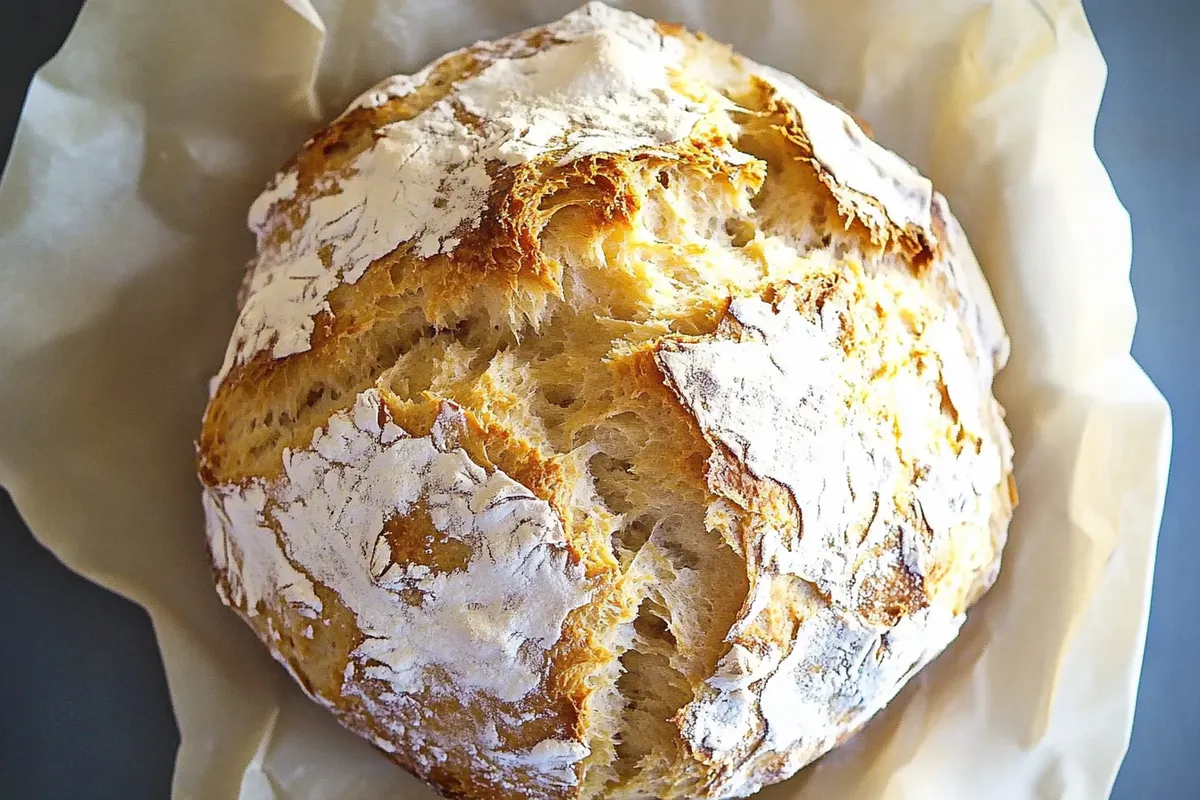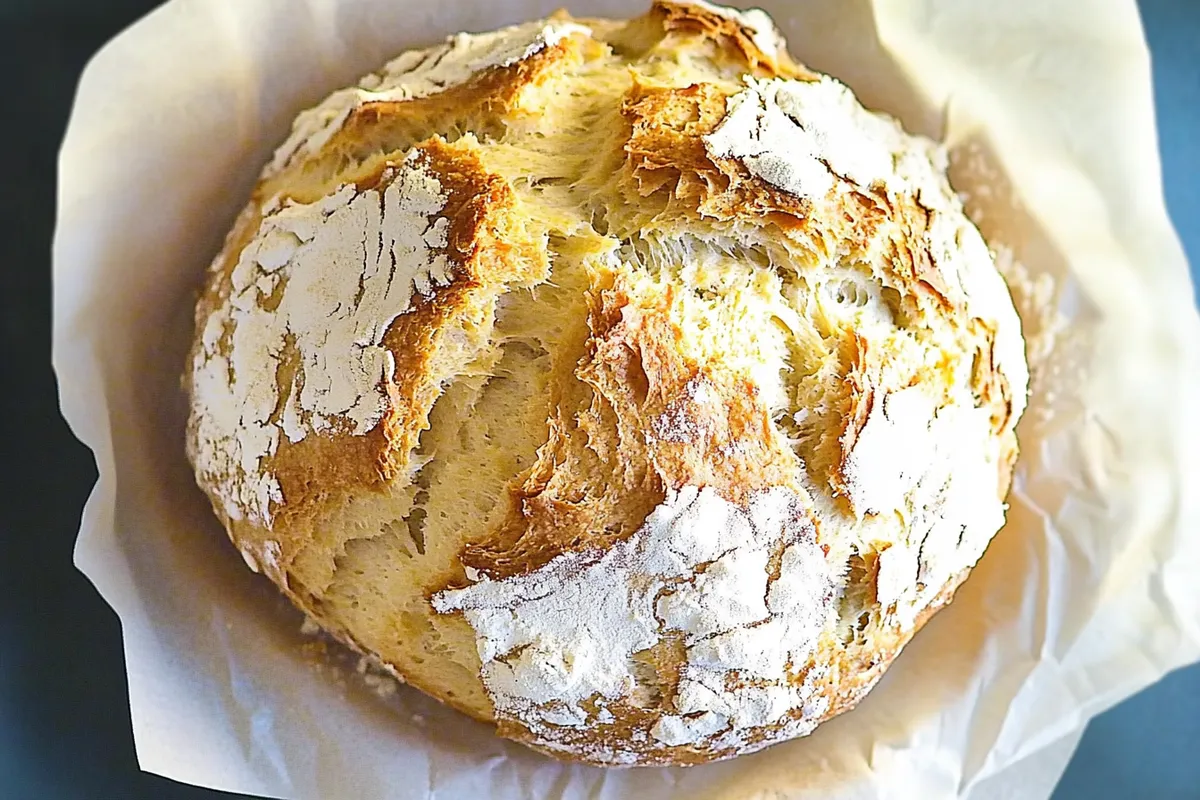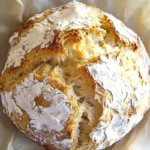St. Patrick’s Day Irish Soda Bread Recipe to Try Today

Are you ready to celebrate St. Patrick’s Day with a warm slice of tradition? Irish Soda Bread is a delightful staple that evokes feelings of comfort and nostalgia, making it a perfect addition to your festive table. This simple yet satisfying bread is made with just a few ingredients, allowing its rugged texture and subtle flavors to shine. One of the best parts about this classic recipe is its versatility; consider incorporating herbs, dried fruits, or even seeds to put a personal touch on your loaf. For those seeking an extra zing, a dash of buttermilk can elevate the flavor, creating a tangy contrast to the sweetness. Remember, achieving the ideal loaf is all about handling the dough gently—overworking it can lead to dense results, and we’re aiming for a perfect, soft crumb. As you embark on this baking journey, get ready to fill your kitchen with an enticing aroma that echoes the heart of Ireland itself!
Ingredients for St. Patrick’s Day Irish Soda Bread:
Dry Ingredients
- 4 cups all-purpose flour, sifted
- 1 teaspoon baking soda
- 1 teaspoon salt
- 1 tablespoon granulated sugar
Wet Ingredients
- 1 ¾ cups buttermilk, at room temperature
- 1 large egg, lightly beaten
Flavor Enhancers
- 4 tablespoons unsalted butter, melted (optional for richness)
- 1 cup raisins or currants (for traditional sweetness)
- 1 tablespoon caraway seeds (adds a unique flavor profile)
Alternative Ingredients
If you’re looking to customize your Irish soda bread, consider the following options:
- Herbs: Add 1 tablespoon of finely chopped fresh rosemary or thyme for an aromatic twist.
- Nuts: Incorporate ½ cup of chopped walnuts or pecans for a delightful crunch.
- Cheese: For a savory version, mix in 1 cup of shredded sharp cheddar cheese, which pairs beautifully with the soda bread texture.
Serving Suggestions
This loaf is wonderful served warm with a pat of butter or alongside a hearty Irish stew. To elevate the experience further, you might also serve it with homemade apple butter or a fruity jam.
Storing Tips
If you prepare extra bread, store it in an airtight container at room temperature for up to 2-3 days. For longer storage, wrap the cooled bread tightly in plastic wrap and freeze for up to 3 months. Simply thaw it at room temperature before serving for a delicious treat anytime!
This ingredients section not only provides a comprehensive list for preparing Irish soda bread but also enhances the recipe with optional variations, enhancing its appeal for different tastes while ensuring it remains unique and engaging.

How to prepare St. Patrick’s Day Irish Soda Bread:
Making Irish soda bread is a delightful way to celebrate St. Patrick’s Day. Follow these easy steps to create delicious, traditional bread.
Gather Your Ingredients
Start by collecting all necessary ingredients. You’ll need:
- 4 cups all-purpose flour
- 1 teaspoon baking soda
- 1 teaspoon salt
- 1 ¾ cups buttermilk
- Optional: 1 tablespoon sugar for sweetness
- Optional: ½ cup raisins or caraway seeds for added flavor
Preheat Your Oven
Set your oven to 425°F (220°C) to preheat. This step is essential for ensuring your bread rises effectively.
Combine Dry Ingredients
In a large mixing bowl, combine the flour, baking soda, and salt. Use a whisk to blend these ingredients thoroughly. This process ensures an even distribution of leavening agents.
Add Optional Ingredients
If you prefer a touch of sweetness or added texture, mix in sugar, raisins, or caraway seeds. Stir them into the flour mixture evenly.
Incorporate Buttermilk
Make a well in the center of your dry ingredients. Pour in the buttermilk gradually. Mix gently with your hands or a wooden spoon until the dough starts to come together.
Knead the Dough Lightly
On a floured surface, turn out the dough. Knead it mildly for just a couple of minutes. Be careful not to over-knead, as this can make the bread tough.
Shape Your Dough
Form the dough into a round loaf, about 1.5 inches thick. Place it on a baking sheet lined with parchment paper for easy removal.
Cut A Cross on Top
Using a sharp knife, score a deep cross on the top of the loaf. This traditional cut helps the bread to expand and ensures even baking.
Bake the Bread
Put your loaf in the preheated oven and bake for 30 minutes. Check for doneness by tapping on the bottom; it should sound hollow.
Cool Before Serving
Remove the bread from the oven and let it cool on a wire rack. Enjoy slices of your freshly baked Irish soda bread warm or toasted!
Tips for the Perfect St. Patrick’s Day Irish Soda Bread
Making the best Irish soda bread involves attention to detail and careful ingredient selection. Follow these tips to ensure your loaf turns out deliciously every time.
Temperature Matters
Start with a preheated oven set to 425°F (220°C). The high heat will help the bread rise quickly, creating that classic crust. Avoid opening the oven door while the bread bakes, as this can cause it to collapse. If you’re using a baking stone, allow it to heat for at least 30 minutes before placing the bread onto it for an extra crispy crust.
Choose Quality Ingredients
Using fresh ingredients significantly impacts flavor and texture. Opt for high-quality all-purpose flour and ensure your baking soda is fresh. Old baking soda can lose its potency, leading to a dense loaf. Buttermilk is key for the authentic tangy flavor. If you can’t find it, you can make a substitute. Mix one cup of milk with one tablespoon of lemon juice or vinegar, letting it sit for about 10 minutes before using.
Practice Gently Handling Dough
When mixing and kneading the dough, be gentle. Overworking will lead to tough bread. As soon as the dough comes together, transfer it to a floured surface and form it into a round shape. Aim for about 1-inch thickness. Make the iconic cross on top, which helps the bread expand while baking and adds a traditional look.
Substitutions for Dietary Restrictions
If dietary restrictions are a concern, it’s easy to make adjustments. For gluten-free versions, substitute all-purpose flour with a gluten-free blend. Make sure the blend contains xanthan gum for structure. If you want a dairy-free option, almond milk or soy milk can replace buttermilk. Just add the acid to mimic buttermilk’s tanginess.
Enhance Flavor with Add-Ins
Feel free to customize your bread! Add raisins or caraway seeds for a twist. For a savory version, consider cheese or chopped herbs. Just be mindful, if you add wet ingredients, you might need to adjust the flour for the right consistency.
Following these tips, you can create a delightful loaf that brings a taste of Ireland to your kitchen. Enjoy your baking and the delicious aromas wafting through your home!
Storage Tips for St. Patrick’s Day Irish Soda Bread:
Enjoying fresh, homemade St. Patrick’s Day Irish Soda Bread is a wonderful experience, and proper storage enhances its longevity and taste. Follow these tips to maintain its freshness and flavor.
Optimal Storage Conditions
Store your Irish soda bread in a cool, dry place. Ideal temperatures range between 60°F to 70°F. Before storing, ensure the bread has cooled completely. This prevents moisture buildup, which may lead to mold. For short-term storage, use a bread bag or wrap the loaf in aluminum foil. Keeping it in a paper bag can also allow it to breathe and maintain the crusty exterior.
Refrigeration and Freezing
If you want to extend the shelf life beyond a few days, consider refrigeration. However, this can alter the texture. Instead, freezing is the best option for long-term storage. Slice the bread before freezing, making it easy to take out only what you need. Wrap each slice tightly in plastic wrap, then place them in a freezer-safe bag. Properly stored, Irish soda bread can remain fresh in the freezer for about three months.
Thawing and Reviving
When you’re ready to enjoy your bread again, remove the desired slices from the freezer. Thaw them in the refrigerator overnight for the best results. If you prefer warm slices, place the bread in a preheated oven at 350°F for about 10 minutes. This revives the crust and warms the interior, making it taste freshly baked.
Shelf Life Expectations
Stored at room temperature in a cool, dry place, your Irish soda bread should last about 2 to 3 days. In the refrigerator, it can stay fresh for a week. If you freeze it, aim to consume it within three months for optimal taste. Monitor for any signs of spoilage, including mold or an off smell, to ensure the bread remains safe to eat.
By following these storage tips, you can enjoy delicious Irish soda bread well beyond St. Patrick’s Day. Make the most of your baking efforts and savor every slice!
Related Recipes to Enjoy with Irish Soda Bread
If you love St. Patrick’s Day Irish Soda Bread, consider trying these complementary recipes that celebrate Irish flavors and textures. Each suggestion enhances your dining experience and aligns beautifully with the rustic charm of soda bread.
Colcannon
Colcannon is a classic Irish dish made with mashed potatoes, cabbage, and scallions. This dish pairs perfectly with soda bread, as the soft, creamy potatoes provide a delightful contrast to the bread’s crusty exterior. The earthy flavors of the cabbage and butter in colcannon enrich the meal, making it a hearty choice for a festive gathering.
Irish Beef Stew
This comforting stew features tender chunks of beef slow-cooked with root vegetables and herbs. The rich, savory broth complements the mild flavor of the soda bread. You can use the bread to soak up the delicious juices, elevating your dining experience. Together, they highlight traditional Irish cooking and create a satisfying meal.
Baileys Cheesecake
For dessert, a Baileys cheesecake offers a sweet finish to your meal. This decadent dessert uses Irish cream liqueur, bringing a lovely creaminess that balances the lightness of soda bread. The contrast between the rich, creamy cheesecake and the dense, rustic bread rounds out a festive meal nicely.
These related recipes celebrate the essence of Irish cuisine, making them ideal companions to classic soda bread. Together, they create a delightful culinary experience ideal for any occasion.
Frequently Asked Questions:
What is St. Patrick’s Day Irish Soda Bread?
Irish Soda Bread is a traditional flatbread that uses baking soda as a leavening agent instead of yeast. It is commonly enjoyed during St. Patrick’s Day celebrations, although it can be made year-round. This bread typically consists of simple ingredients such as flour, baking soda, salt, and buttermilk, creating a quick and easy recipe that yields a crusty exterior and a soft, dense interior.
How is Irish Soda Bread different from other types of bread?
The key distinction of Irish Soda Bread from other breads lies in its leavening method. While many breads rely on yeast for rising, this classic recipe utilizes baking soda as a chemical leavener, resulting in a quicker preparation time. Additionally, the absence of long fermentation periods gives it a distinctive texture and flavor profile.
Can I customize my Irish Soda Bread recipe?
Absolutely! One of the best aspects of the traditional Irish Soda Bread is its versatility. Feel free to incorporate ingredients such as raisins, caraway seeds, or oats to enhance the flavor and texture. This adaptability allows for a personalized touch that can cater to various palates.
Is St. Patrick’s Day Irish Soda Bread difficult to make?
No, making this beloved bread is surprisingly straightforward and beginner-friendly. The process requires minimal ingredients and does not involve complex steps like kneading or proofing, making it accessible to cooks of all skill levels.
How should I store leftover Irish Soda Bread?
To maintain freshness, wrap any leftover Irish Soda Bread in plastic wrap or aluminum foil and store it at room temperature for a couple of days. For longer preservation, consider freezing the bread, ensuring it is well-wrapped to prevent freezer burn.
Is there a gluten-free option for Irish Soda Bread?
Yes! You can easily make a gluten-free version by using a gluten-free all-purpose flour blend in place of regular wheat flour. Remember to check that the baking soda and other ingredients are also gluten-free to ensure that your bread is suitable for those with gluten sensitivities.
Conclusion:
In summary, making St. Patrick’s Day Irish Soda Bread is a delightful experience that showcases simplicity and versatility. With just a handful of ingredients, this bread can be on your table in no time, making it perfect for both novice and experienced bakers. The flexibility of the recipe allows for a variety of add-ins such as raisins, nuts, or caraway seeds to suit your taste—providing endless customization options. Remember to embrace the process and experiment with different flavors to create your unique twist. Whether enjoyed fresh with butter or toasted for a hearty breakfast, this bread captures the essence of Irish cuisine. Celebrate St. Patrick’s Day by sharing this no-fuss, authentic bread with family and friends, and enjoy the rich traditions it brings to your table.
Print
St. Patrick’s Day Irish Soda Bread Recipe to Try Today
- Total Time: 45 minutes
- Yield: 1 loaf (about 8 servings) 1x
Description
Celebrate St. Patrick’s Day with this traditional Irish soda bread! This easy, no-yeast bread has a crispy crust and a soft, dense interior—perfect with butter or jam.
Ingredients
- 4 cups all-purpose flour
- 1 ½ tsp baking soda
- 1 tsp salt
- 1 ¾ cups buttermilk
Instructions
- Preheat & Prep: Preheat oven to 220°C (425°F). Line a baking sheet with parchment paper.
- Mix Dry Ingredients: Whisk flour, baking soda, and salt in a bowl.
- Add Buttermilk: Gradually mix in buttermilk until a dough forms.
- Shape & Score: Knead lightly, form a round loaf, and place on the baking sheet. Cut a deep “X” on top.
- Bake: Bake for 30-35 minutes until golden brown. Let cool before slicing.
Notes
- For a softer crust, wrap the bread in a damp towel after baking.
- Add raisins or caraway seeds for a sweeter variation.
- Best enjoyed fresh but can be stored for up to 2 days.
- Prep Time: 10 minutes
- Cook Time: 35 minutes
Nutrition
- Calories: 180 kca
- Fat: 1g
- Carbohydrates: 35g
- Fiber: 2g
- Protein: 5g
